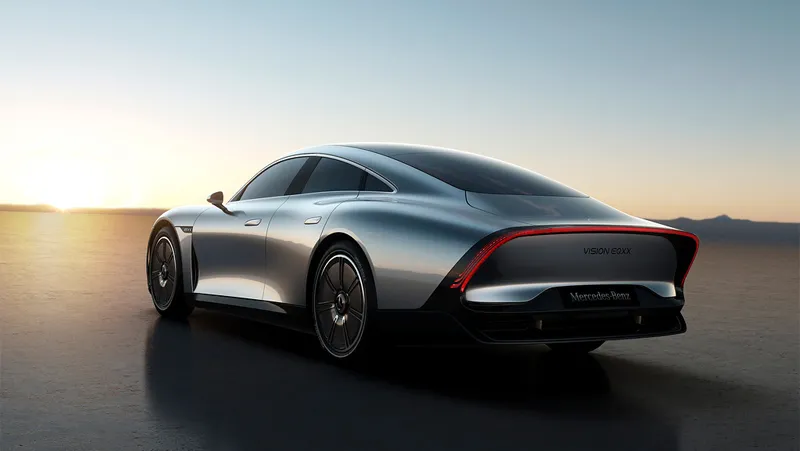Toyota recently announced plans to develop and launch an all-electric vehicle with an expected range exceeding 900 miles on a single charge. While technical details are still limited, this new EV promises to significantly disrupt the automotive industry if Toyota is successful in bringing it to market with the advertised capabilities.
et’s take a deeper look at some of the most important benefits and implications of Toyota achieving a 900+ mile EV.
Increased Adoption of Electric Vehicles
One of the most prominent obstacles preventing more widespread EV adoption is “range anxiety” – consumers’ fears of being stranded due to a depleted battery before reaching their destination or finding a charging station. A 900+ mile range would virtually eliminate these concerns for the vast majority of drivers and their daily travel needs. It could make EVs a practical option for those who regularly take long road trips or those who simply want the freedom and flexibility to drive wherever without careful route planning or extra charging stops.
Moving beyond early EV adopters willing to compromise on range limitations, a 900+ mile Toyota EV could appeal to. The average driver just based on its perceived usefulness and functionality similar to gas-powered vehicles. This alone has the potential to significantly increase EV market share over the next decade by addressing. What is likely the number one existing barrier deterring many drivers who are otherwise interested in electric propulsion.
Reduced Need for Public Charging Infrastructure – Long Range Electric Vehicle With 900+ Miles
With such an immense driving range potential before the battery needs recharging, a 900+ mile Toyota EV would reduce reliance on public fast-charging stations compared to current EVs with ranges under 300 miles. According to the Department of Energy, there are currently over 45,000 public charging stations in the United States. A number that is growing but still poses gaps in coverage or convenience along some travel routes. Fewer charging stops needed translates to better long-distance travel experiences and allows infrastructure builders to focus growth in key areas versus spread as widely.
It could also alleviate political and financial challenges surrounding the massive infrastructure investments required to achieve widespread fast-charging coverage comparable to today’s gas stations. With fewer drivers dependent on public charging for most of their annual mileage, the buildout demands and timelines may become more reasonable.
Cost Competitiveness with Gas-Powered Vehicles – Long Range Electric Vehicle With 900+ Miles
As electric vehicle battery costs continue declining while driving ranges increase. The total cost of ownership over a vehicle’s lifespan will become competitive with, and eventually lower than, comparable gas-powered cars. However, the upfront purchase price premium remains a barrier for many buyers. A long range EV could see this premium reduced through economies of scale in battery production to meet demand. Furthermore, lower operating and maintenance costs upfront at the time of purchase may be feasible through larger, more affordable battery packs offering hundreds or thousands of miles per charge.
For fleet owners, the payback point on the additional upfront investment versus lifetime fuel cost savings would arrive much sooner. This could accelerate the electrification of commercial fleets which rely heavily on range and lower total costs. Overall, a 900+ mile Toyota EV may hit an important inflection point when comparing full lifecycle costs that truly makes EVs cheaper to own than gas cars for most private consumers as well.
New Technical Achievement and Competitive Advantage
| Battery Technology | Manufacturing |
| A 900+ mile range would require breakthrough advances in battery energy density, chemistry, and/or packaging efficiency over contemporary lithium-ion technologies. This achievement can provide valuable intellectual property and new battery manufacturing capabilities for Toyota. | Mass producing high capacity, long enduring battery packs can significantly lower costs through economies of scale. It grants Toyota experience leverage over competitors and suppliers for further electrification goals. |
Reaching a 900-mile EV milestone demonstrates impressive research and development abilities. It strengthens Toyota’s reputation as an industry leader in advancing automotive electrification. Customers may perceive the new model as a continuation of Toyota’s reputation for reliability, practicality, and efficiency – but now with zero direct emissions. Successfully meeting the stated 900-mile goal would hand Toyota a major technological and competitive edge over rivals for many years.
Reduced Emissions and Environmental Benefits
Widespread adoption of electric vehicles is integral to reducing transportation sector emissions. One of the largest sources of global carbon dioxide pollution. A single 900+ mile range EV replacing a gas-powered car could potentially prevent over 20,000 pounds of CO2 emissions annually according to EPA estimates. As millions of such high endurance electric cars hit roads and highways worldwide. It could dramatically curtail oil dependence and cut harmful tailpipe pollutants in both urban and suburban environments benefiting public health.
With sufficient renewable energy powering them, long range EVs offer a pathway for heavy-duty vehicles. And commercial fleets and long haul trucking to transition away from diesel and move towards electrified operations producing zero direct emissions. This could help various nations and industries meet progressively stricter emissions standards and environmental protection goals in the coming decades.
Advances in Automotive and battery technology
Reaching a 900+ mile range requires unprecedented advancements in batteries, power electronics, motors, vehicle aerodynamics, and weight optimization. The knowledge gained can spill over to other engineering applications beyond personal transportation. For example, battery technologies with higher energy density may enable new frontiers in electric Aviation and shipping. Similarly, ultra-lightweight materials developed for the vehicle can find deployment across multiple industries.
Successful demonstration of a 900-mile EV proves what is achievable now and provides a roadmap with stretch goals to. Further enhance sustainability, performance and versatility of electric powertrains moving forward. It raises the bar for competitors and stimulates greater R&D spending, accelerating the overall industry-wide pace of innovation. The advances from such an ambitious project have immense potential to transform various sectors of science and economy worldwide.
Long Range Electric Vehicle With 900+ Miles – Parting Words:
If realized with the advertised 900+ mile range capability. Toyota’s new long endurance electric vehicle has the ability to significantly disrupt the automotive landscape. It addresses major existing barriers currently preventing faster worldwide adoption of electric cars. Simultaneously, such a breakthrough achievement stands to provide immense environmental and societal benefits through decreased emissions. Electrification of other industries, and new innovations flowing from the R&D efforts required. However the ultimate impacts will depend on how accurately the EV meets its exceptionally long range goal upon launch into production. The potential implications are enormous if successful.

